Oct 17, 2017
TSN.ca's Northwest preview: Can the Thunder's Big 3 make it rain?
Ahead of the regular season tipping off on Tuesday night, TSN.ca looks at a burning question facing every NBA team. In the Northwest, the Oklahoma City Thunder has a brand new Big 3 to challenge the Golden State Warriors, the Minnesota Timberwolves appear primed for a breakout and the Utah Jazz adjust to life without Gordon Hayward.
TSN.ca Staff
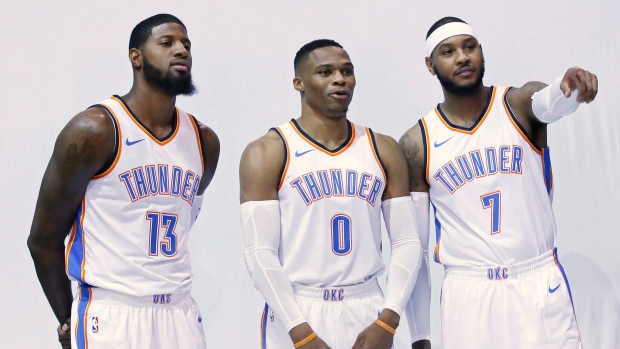
Ahead of the regular season tipping off on Tuesday night, TSN.ca looks at a burning question facing every NBA team.
In the Northwest, the Oklahoma City Thunder has a brand new Big 3 to challenge the Golden State Warriors, the Minnesota Timberwolves appear primed for a breakout and the Utah Jazz adjust to life without Gordon Hayward.
--
Are the Nuggets a sleeper team in the West?
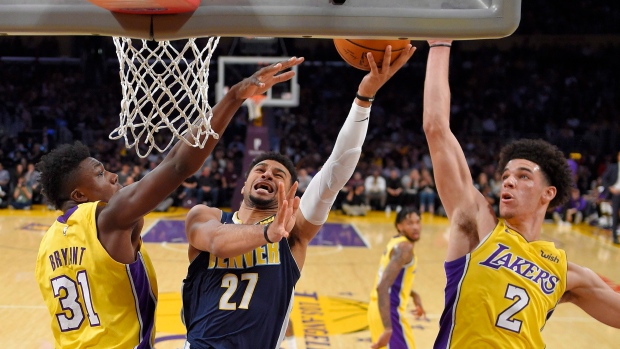
The Denver Nuggets were a lot of fun to watch last season – that is, if you did watch them.
The emergence of the Nuggets down the stretch as a super entertaining team that just missed out on a playoff spot largely got lost among the more prominent narratives of last year, but with some smart additions and continued development of its young stars, you might be hearing a lot more about them over the course of this season.
Central to the Nuggets’ late surge that saw them miss out on the final playoff spot in the West by a solitary game was the rise of Nikola Jokic. Never mind Kristaps Porzingis, Jokic is the real unicorn. Averaging 16.7 points and 9.8 boards a night, the 22-year-old Serb is a force in the paint with a deft touch for creating for those around him. If he played in a bigger market, you’d already be very familiar with his name.
It only makes sense, then, that he’s joined now in a Denver frontcourt by one of the most unheralded stars of the past several years in Paul Millsap. Signed as a free agent from the Atlanta Hawks, Millsap quietly goes about his business and the four-time All-Star will be looked to for help on both sides of the ball. Millsap, 32, is versatile enough that he can slot in at either forward position, stretching the floor at the four or dropping into the three. His outside shot will help offset the loss of Danilo Gallinari, the team’s best threat from three. Along with Mason Plumlee, recently signed to a three-year, $41 million extension, the Nuggets’ frontcourt looks to be a big strength this season.
In the backcourt, it’s Jamal Murray’s time to shine. With Emmanuel Mudiay not panning out the way the team intended when they took him with the seventh overall pick in 2015, Murray has every chance to usurp the starting point guard position away from him. The Kitchener, Ont. native showed flashes of brilliance in his rookie year, but will need to improve his shot selection that will aid in his growth as a consistent pro shooter. When he was drafted, it was unsure as to which guard position Murray would excel, yet the point appears to be where he’ll find the most success.
His partner in the back is the excellent Gary Harris. Harris is fresh off of signing a four-year, $82 million pact with the team and is likely to get a lot of open looks with more attention being paid to the Nuggets’ frontcourt. Harris and Jokic have already developed a solid rapport, one that will be central to any Nuggets’ success going forward. The likes of Wilson Chandler, Kenneth Faried and Jameer Nelson add veteran depth to a team led by its youth.
The Achilles’ heel for Mike Malone’s team will still be defence. Yes, Millsap will help, but you’re still talking about a team that the league’s second-worst defensive rating ahead of only the woeful Lakers. While the team posted the fourth-best offensive efficiency in the NBA last season, porous defence prevents the Nuggets from being viewed as a lock for the postseason.
If they can lock it down to at least a respectable degree, an improvement on last year’s 40 wins and a trip to the playoffs for the first time in five years should be in the cards.
--
Are the Timberwolves ready for prime time?
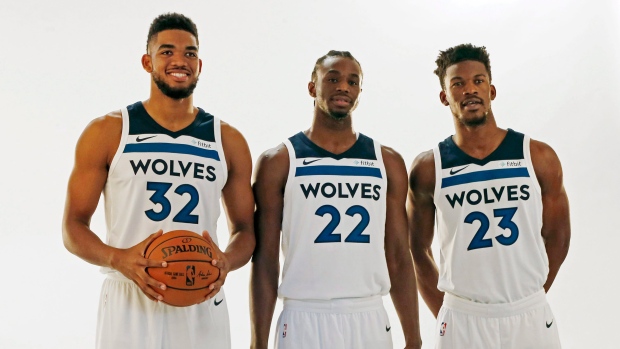
The Minnesota Timberwolves haven’t made the playoffs since 2004 and haven’t posted a .500 season since 2005, but after more than a decade of mediocrity, it’s time for the T-Wolves’ close-up – whether they’re ready or not.
If the hiring of Tom Thibodeau last summer signaled the club’s intent to return among the league’s powers, the acquisition of Jimmy Butler cements it. Anchored to a mostly terrible Chicago Bulls team for the past few seasons, the three-time All-Star brings with him an energetic two-way game and the kind of leadership necessary to boost a young team’s fortunes. To help make that jump, the T-Wolves have brought in another pair of Thibodeau favourites in Taj Gibson (wearing the No. 67…okay) and Jamal Crawford, who carry 130 games of playoff experience between them.
On top of these moves, the team has made a change at point guard. Gone is the flashy, but injury-prone and inconsistent Ricky Rubio (traded to the Utah Jazz) and in his stead comes Jeff Teague. A no-nonsense floor general, Teague is a more than capable passer and possesses a fine outside shot.
Of course, all of these additions are to supplement the two men with whose fortunes the Timberwolves will live and die in Karl-Anthony Towns and Andrew Wiggins. The 2015 and 2016 NBA Rookies of the Year, respectively, KAT and Wiggins might be the deadliest young combo in the NBA. Alongside Butler, Wiggins – newly signed to a five-year, $146.5 million extension - will provide a dynamic wing presence and scoring punch that few teams will be capable of defending.
Meanwhile, Towns might be the best young big this side of Giannis Antetokounmpo in the NBA. With the level of frontcourt depth and balance in Minnesota right now, the scary numbers (25.1 PPG and 12.3 RPG) are only going to get more garish for Towns.
So why not hop onto the T-Wolves bandwagon now?
Well, Thibodeau is going to play the hell out of his starters, especially in the backcourt where there isn’t a ton of depth. In a West so littered with talent, an injury to one of his stars could be a major setback. Sure, you can make this argument with just about any other club in the NBA, but if Wiggins goes down, Shabazz Muhammad is not going to carry the load.
There’s also the matter of team defence. Butler is going to be a big help, but this is still a team that finished last season with teams shooting an adjusted .535 against them and 26th overall in defensive rating. Unless there is a marked improvement, it’s far too early to anoint these Timberwolves as world beaters.
The Timberwolves won only 31 games last season, so an improvement on that should be a given. There’s also enough firepower here to believe that a return to the playoffs should also be in the cards, but the jump required to actually do this is far from a sure bet. At the very least, the T-Wolves are back on the radar after far too long in the, ahem, wilderness.
--
Will the Thunder’s big gamble pay off?
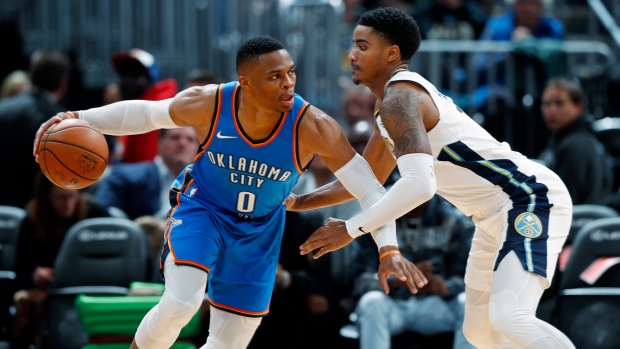
What a difference a year makes.
In the summer of 2016, the Oklahoma City Thunder were reeling with the loss of Kevin Durant in free agency to the Golden State Warriors. If this weren’t a bitter enough pill for the organization to swallow, the team began negotiations with the Boston Celtics to trade their remaining franchise player, Russell Westbrook, and, in effect, to fully tear down the team that went to the 2012 NBA Finals.
Well, Westbrook was never traded. Instead, Brodie became a one-man wrecking crew, almost singlehandedly willing the Thunder into the playoffs with bonkers numbers (31.6 PPG, 10.7 RPG and 10.4 APG), including an NBA record 41 triple-doubles, on his way to the NBA MVP award. Though the Thunder bowed out of the playoffs in five games to the Houston Rockets in the first round, Westbrook did his best to make the Thunder forget about Durant.
This past summer, rather than subtract, the Thunder added. First, Sam Presti pulled off a surprise blockbuster by acquiring Paul George from the Indiana Pacers from under the noses of the Celtics, Cleveland Cavaliers and Los Angeles Lakers. Then, Presti brought in Carmelo Anthony from the New York Knicks just as it appeared he was heading to the Portland Trail Blazers. To complete his momentous off-season with a victory lap, Presti locked up Westbrook to the largest contract in NBA history – a five-year deal worth $205 million.
But as the applause for his summer work dies down as the regular season begins, the reality of Presti’s wheeling and dealing sets in – while the Thunder have their own Big 3 now, the question is how long will it last?
In acquiring Melo and PG13, the Thunder exhausted much of its depth. Though there might not be a superstar among Victor Oladipo, Domantas Sabonis, Enes Kanter or Doug McDermott, all four men were serviceable pieces who played big roles in the team’s 47-win season. The signings of Patrick Patterson and Raymond Felton will help offset their departures, but the bigger issue remains – will George and Anthony stick around after this season?
Both George and Melo are unrestricted free agents come July 1. George, whose earning potential when it comes to endorsement deals was, no doubt, hampered by playing in Indianapolis, is a Los Angeles native and a lifelong Lakers fan. The allure of returning to his hometown on his boyhood team – one on the rise and one with plenty of money – might be too hard to resist. Anthony is close friends with LeBron James, Dwyane Wade and Chris Paul, all of whom are unrestricted in the summer, as well. With rampant rumours of LeBron intending to put a super team together out west, Melo is likely all ears.
So then it’s incumbent upon the Thunder to make hay while the sun shines. In Westbrook and George, Billy Donovan has two of the league’s elite scorers at his disposal and a starting five (Westbrook, Andre Roberson, PG13, Melo and Steven Adams) that can hold its own with anybody in the NBA. The Thunder should be among the league’s most dynamic scoring teams.
Question, of course, still linger. What if this Big 3 doesn’t click? What if injuries rear their ugly heads and this lack of depth is exposed? What if it all goes to hell after a single season? One thing is certain, though: this Thunder team will be a lot of fun while it lasts.
--
Is an All-Star backcourt enough to keep the Blazers relevant?
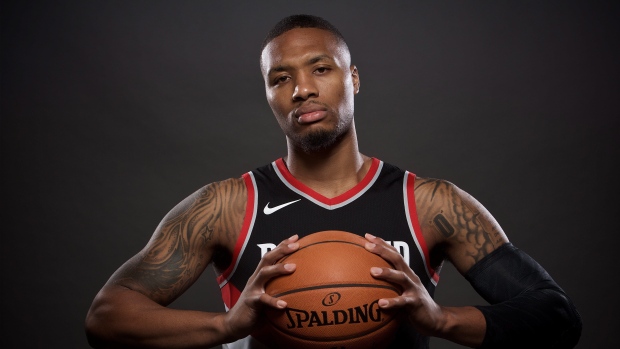
It’s becoming evident that the Portland Trail Blazers’ first season after the departure of LaMarcus Aldridge was a bit of an aberration. Damian Lillard and C.J. McCollum emerged as one of the top backcourts in the NBA, the team won a surprising 44 games and they upset the Los Angeles Clippers in the first round of the playoffs.
Nobody saw it coming because it probably shouldn’t have happened. Last year’s Blazers were closer to the mean. The team struggled mightily for much of the season, despite the backcourt’s efforts, finishing .500 and hanging on to the final postseason spot before being blown out of the water in a sweep by the Golden State Warriors.
With the improvement of the teams around them in the West, a similar effort this season will leave Terry Stotts’ team on the outside looking in.
So what’s a realistic expectation for this Blazers team?
Lillard and McCollum remain an elite guard combo. Perhaps only the Warriors, Washington Wizards and Toronto Raptors can boast a backcourt tandem of this skill level. The pair combined for 50.0 PPG last season and were .396 from beyond the arc (McCollum at .421). The Blazers’ offence will again run through this pair who can seemingly take over games at will with McCollum’s sweet stroke and Lillard’s take-no-prisoners style.
The issue is those around them. Simply put, there’s not a lot of talent on this Blazers team. There’s reason to be excited about Jusuf Nurkic, who came over in a midseason deal with the Denver Nuggets. The team went 14-6 in the lineup before his untimely leg break that took him out of most of April and three of the Blazers’ four playoff games. Nurkic, in his short time with the Blazers, brought defensive responsibility to a club crying out for it (the Blazers were 24th in defensive efficiency last season). Needless to say, Nurkic’s concussion incurred in a preseason game against the Sacramento Kings is seriously disconcerting for the Blazers.
The absence of Nurkic makes the Blazers look a lot like what they did before he arrived – listless, plodding and prone to getting lit up on any given night. Outside of the backcourt, there’s not a lot of scoring help and Allen Crabbe (whose ridiculous four-year, $75 million offer sheet given to him by the Brooklyn Nets was matched last summer), the team’s best deep threat, is finally off to Brooklyn.
If this were an Eastern team, the Blazers would still be in the thick of the playoff hunt, but the realities of being in the West mean that the Blazers’ failure to keep pace with those around them means the postseason is likely out of reach.
--
Where do the Jazz go without Gordon Hayward?
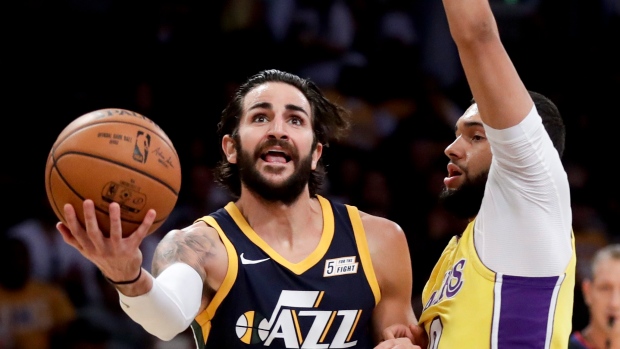
Fans burning jerseys after a player leaves their team is dumb and it has to stop. Yes, there’s visceral anger when a guy they’ve watched for years heads for greener pastures, but you look like goofs when you post these impromptu bonfires on social media. The departure of Gordon Hayward this summer from the Utah Jazz set off many of these protests in Salt Lake City as the team’s best player left for literally greener pastures with the Boston Celtics.
Dealing with a post-Hayward era comes at an inopportune time for a team that looked to be on the rise. After a 51-win season led by Hayward and monster in the middle, Rudy Gobert, the Jazz dumped the Los Angeles Clippers in the first round of the playoffs last spring before gamely bowing out to the eventual NBA champions, the Golden State Warriors.
It marked the Jazz’s return to the playoffs after a four-year absence and the victory over the Clippers was the club’s first series win since 2010. Big things appeared to be on the horizon for this emerging club…if they could hold onto their talisman.
Well, Hayward left. So now what?
This is now Gobert’s team. The big Frenchman is an elite defender whose modest scoring touch took a big step last season (going from 9.1 PPG to 14.0) and will need it to take another this year. Headed by Gobert, the Jazz’s commitment to team defence won’t change without Hayward. This should still be one of the harder teams to score on in the West with the likes of Derrick Favors, healthy after missing 50 games over the last two seasons with a knee injury, and Ekpe Udoh, returning to the NBA after two seasons with Fenerbahce where he won a EuroLeague title and was named the tournament Final Four MVP last year, protecting the rim.
It’s the other side of the ball where problems will occur. Even with Hayward’s 21.9 points per game, the Jazz weren’t exactly an offensive juggernaut. Their 100.7 points a night were the third-fewest in the league, while their field-goal attempts (37.0) were dead last. With George Hill gone, too, an outside shooting threat is virtually absent from this team.
Maybe Ricky Rubio is part of the answer. He wasn’t in Minnesota, but Rubio will have the opportunity to revitalize his career with the Jazz. Now with long hair and a full sleeve, Rubio brings a level showiness that Hill never did with good court vision and crisp passing. Rubio’s failings come with his shot, though, especially from outside, where Quin Snyder would love for the Spaniard to start hitting with regularity. Don’t count on it, though. Rubio’s .402 field-goal mark was the highest of his six-year career and he owns a career .315 average from three. If – and it’s a big if – Rubio can convert the open looks he’s going to surely get, the team will be thrilled.
There is also the issue of durability. If the aforementioned Favors were the only injury-prone player on the Jazz, it would be one thing, but he’s one of many. Dante Exum, the fifth overall selection in 2015 and a player the Jazz were counting on to emerge as an offensive threat, looks like he’s going to miss all of this season with a shoulder injury. Alec Burks and Rodney Hood, missed a combined 63 games last season, leaving the two-guard spot in flux.
There are just too many unknowns here to get a good read on what can be fairly expected from the Jazz this season. Team defence should be good enough to keep the team in games on most nights, but it’s difficult not to see this team regressing without an obvious answer on offence.



